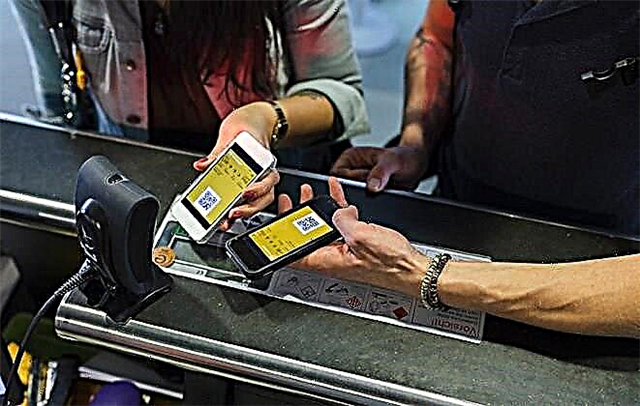The transport network of the German capital has gradually developed over the past seven hundred years. The world's first tram, trolleybus, electric bus ─ all of this appeared right here. There are several ways to get to any point within a radius of 15 kilometers from the Brandenburg Gate. Berlin's public transport is so well developed that tourists have a choice problem. Transport arteries densely cover the metropolis both outside and underground, both on land and on water. It remains only to decide what is more profitable to use.

Varieties of Berlin transport
If urban and suburban transportation suddenly ceased to function, an additional million private vehicles would be needed to cover the needs. Berlin's public transport map is literally dotted with routes of various lengths and directions. And this is not counting the most numerous taxis in Germany per capita, as well as a well-developed car sharing (hourly private car rental) and a cable car with a length of one and a half kilometers.
The main types of transport can be divided into the following groups:
- buses;
- trams;
- underground;
- city train;
- ferries and river trams.
The working hours of transport in Berlin allows you to move freely around the city most of the day: electric trains run from 04.30 am to 00.30 am every day, and the metro is open from 4 am to 1 am. Moreover, the transport here runs like clockwork: strictly according to the schedule and accurate to the minute.
There are night bus and tram lines, and the central metro lines are even open 24 hours on holidays and weekends. A taxi, by definition, always runs around the clock.
Subway and electric trains
The metro and city trains form the backbone of the city's transport system. The metro is called U-bahn (short for Untergrundbahn). At the moment it has 9 lines and 173 stations. The Berlin public transport scheme in this part is presented below.

Most of the paths are underground, but there are also sections that run along streets and bridges. Large white U on a blue background in urban infrastructure is difficult to miss.
During rush hours, trains run at intervals of 2 to 5 minutes, on weekends and on holidays less often - about every 10 minutes. Here you can find two types of cars: narrow on the lines U1, U2, U3, U4 and wide on the U5, U6, U7, U8, U9.
There is free Wi-Fi in the carriages, telephone communication is not difficult, and you can recharge your smartphone at ticket machines. At the main transfer stations there are shops, banking points, fast food outlets, and some have cast iron scales made in the 1920s and 1930s. Weighing cost ─ 10 cents.
The city train is called S-bahn. Stops are identified with white S on a green background. Suburban-city trains connect the central districts and outskirts. The railway network has a length of 327 km, 16 routes and 166 stations.
The overwhelming majority of the paths lie on the surface. The main stops are combined with railway, bus stations, metro stations and other interchange hubs. The interval of train traffic is 5-10 minutes.
Berlin tram
City electric transport in Berlin cannot be imagined without a tram - the oldest in the world. In urban planning plans, this type of transport occupies a leading place due to environmental friendliness. They are mainly used to connect metro and bus lines.
Today the tram service is presented mainly in the eastern part of the city. There are only two lines in the western one. The diagram looks like this:

The tram system includes 22 routes with a total length of 440 km. Including 9 MetroTram lines (indicated by the letters M on the diagram).
Unlike the regular Tram or Straßenbahn (routes 12-68), this variety resembles subway trains. The number of cars can be five or more, plus they are more comfortable. If the usual one runs until 12 pm, then this one works around the clock at intervals of 10 minutes, and after midnight every 30 minutes.
Bus service
Berlin's ground transport is well represented by the city's bus network, operated by a single operator, BVG. A quarter of city traffic is assigned to this type of transport. The total length of routes is 322 km, and the fleet includes 681 buses.
Standard routes are numbers from 100 to 399. The first numbers 1 and 2 indicate the frequency of movement of no more than 20 minutes, and 3 - for movement according to an individual schedule. The second digit indicates the district, and the third is used for sequential numbering.
Some of the buses belong to the MetroNetz network. These are designated MetroBus (on the maps and stops with the letter M), and run in the northern districts of the city, where there are not enough subway and train routes.
Express trains are marked with the letter X.
The TXL-bus route, which connects the center, the main railway station and Tegel airport, has a special designation.
At night, transportation is carried out by night lines (the route number begins with the letter N). Buses with three-digit numbering replace the main daily routes, and those with single-digit numbers - the corresponding subway lines. The interval of movement does not exceed 30 minutes.
River communication
Berlin's waterways are the oldest in the city. The first ferry appeared in the XIV century.
The total area of reservoirs in the area of the German capital is approximately 60 sq. km. Natural opportunities could not but be used. Today there are 6 ferry lines operating here (three of them ─ F10, F11, F12 ─ year-round, three ─ F21, F23, F24 - from Easter to October 3), annually carrying up to a million people. The interval of movement is from 10 minutes to an hour.
Ferries, or "floating buses" as the BVG calls them, run only during the day, and traffic is limited in fog and ice.
Some other lines are operated by private carriers. For example, to the island of Rfaueninsel or from Hackenfelde to Tegelort. By the way, the last ferry is the only one ferrying horses, cars and sightseeing buses.
The possibilities of the German capital do not need to be assessed. We will tell you how to use public transport in Berlin below.
City taxi
Taxis are represented here by a fleet of more than eight thousand Mercedes-Benz cars. Most of the transportation is carried out by small private entrepreneurs. The cars are easily recognizable due to their light ivory color.
Payment is made by counter. The cost of boarding is 3.90 euros. Tax for travel:
- the first seven km ─ 2 EUR / km;
- further 1.50 EUR / km.
Outside the city, payment is allowed by agreement. It is possible to order a taxi by phone or through mobile applications.
In addition, in Berlin you can find exotic cycle rickshaws Bike Taxi, Berlin Rikscha Tours or Velotaxi.
Berlin airports
Berlin has two operating airports. These are Tegel, located 8 km northwest of the city, and Schönefeld, which is 18 km southeast. The first one is the main international air gateway, receiving aircraft from 130 countries of the world.
The second one serves flights of mainly charter and low-cost carriers. Berlin Brandenburg Airport is due to open in 2021. The two operating airports will then be closed.
Tariff zones
Berlin's public transport zones with currently available routes are shown on the following map:

The diagram shows that the city is divided into three tariff zones:
- A ─ center within the ring railway;
- B ─ covers the rest of the area of the German capital;
- From ─ includes most of the suburbs, including Potsdam, the Sachsenhausen Memorial and Schönefeld Airport.
Types of tickets
There are the following types and names of tickets for public transport in Berlin:
- Kurzstrecke is a short trip. Designed for three stations by metro and electric train, or up to six by bus and tram without transfers in zones A and B. In zone C it can be used only for electric trains.
- Einzelfahrschein is a one-way ticket. Lasts 120 minutes.Transfers are allowed, changing the mode of transport in one direction. To return, you need a new ticket.
- 4-Fahrten-Karte ─ for four trips. Analogue of Kurzstrecke / Einzelfahrschein, but at a discount.
- Anschlussfahrschein ─ connecting (through) between zones A and C. Allows you to add a trip to a zone not marked in the main ticket.
- Tageskarte ─ daily. For trips by any vehicle from the time marked with a punch until three o'clock in the morning of the next day.
- 7-Tage-Kart is a weekly pass for all types of transport.
- Kleingruppen-Tageskarte ─ for a day for a group of up to 5 people.
- Monatskarte is a monthly pass.
- 10-Uhr-Karte is a monthly pass for those who like to sleep. You can use any transport from 10 am during the week or from 24.00 on weekends and holidays until three o'clock the next day.
- Jahreskarte is a subscription for 12 calendar months.
Now about how much transport fares in Berlin cost:
- Kurzstrecke costs € 1.70, per child € 1.30;
- Einzelfahrschein cost (by zone): € 2.70 AB, € 3 BC and € 3.30 ABC. For children from 6 to 14 years old: 1.70, 2.10 and 2.40 euros, respectively;
- a full trip for four short trips costs 5.60 euros, a concessional one (for children) ─ 4.40. For four one-way trips, an adult 4-Fahrten-Karte costs from 9 to 13.20 euros, a child ─ from 5.60 to 9.60 euros;
- prices for day tickets, depending on the zones, vary from 7 to 7.7 euros;
- Anschlussfahrschein costs 1.60 euros;
- group Kleingruppen-Tageskarte costs between 19.9 and 20.8 euros;
- weekly 7-Tage-Kart - from 30 to 37.50;
- the cost of a monthly pass varies from 81 to 100.5 euros;
- 10-Uhr-Karte tickets are priced from 59 to 73.30 euros:
- a one-year pass costs between 761 and 976 euros.
However, there are also special cases. For example, BVG teamed up with Adidas to launch a € 180 sneaker with an annual pass already sewn into the sole. The shoes were sold out instantly.
The more zones the ticket covers, the more expensive it is. This is the most recent data, however it is not static and is updated annually. Public transport fares in Berlin may change in 2021.
Tourist routes
There are special offers for tourists in Berlin:
- Berlin WelcomeCard - a ticket for travel in any transport throughout the city, discounts from 25 to 50% from 200 partners, a free guide and map.
- Berlin WelcomeCard Museumsinsel - A similar ticket, but with additional discounts.
Both proposals are interesting for those who are looking for options on how to save on transport in Berlin, and at the same time join the cultural and historical heritage of the city.

The Berlin Welcome Card is available for a specific period of time for use in AB / ABC zones at the following prices in euros:
- for 48 hours ─ 19.90 / 22.90;
- for 72 hours ─ 28.90 / 30.90;
- for 4 days ─ 33.50 / 35.90;
- for 5 days ─ 36.90 / 41.50;
- for 6 days ─ 42.50 / 46.50.
Berlin cards for museums and transport are issued for 72 hours only and cost 45 and 47 euros, respectively, in the tariff zones. These tickets allow you to visit the Museum Island with a 30% discount.
A list of partners and discounts can be found at www.visitberlin.de/welcomecard. The newest offer - Berlin Welcome Card all inclusive% starts at 79 euros and gives you even more options.
Buying and using a ticket
A few words about how to buy tickets in Berlin for transport. Tickets are sold at kiosks and vending machines on platforms and stations, in airport terminals, and from bus drivers. Trams have special machines. You can buy a bus ticket directly in the salon. It is not necessary to compost such one, since it is already stamped on it. The rest of the tickets must be composted before the trip ─ inserted into a special device on the handrail.
Ticket-free travel
"Zaitsev" is punished with a fine of 40 euros. The same is done with those who forgot to validate the travel card or bought a ticket for another zone. Inspectors in Berlin do not wear uniforms and do not indulge tourists.
How to plan a route
The official Berlin public transport website www.bvg.de allows you to plan your route with high precision, view the timetable, find the nearest stop, select and buy tickets, and find out a lot of other useful information. Surprisingly, the fact is that even taking into account trips by metro, electric trains and ferry, the planner works 100% correctly, and it is easy to use it.
To get directions on the Berlin public transport website, you need to:
- Open a portal.
- Select language (German and English available).
- Enter the names of the places of departure and arrival in the form, select the type of transport, date, time and activate the search.
Comprehensive information about embarkation / disembarkation platforms, stops, transfers, travel time, arrival and fare will appear.
For example, there are three types of transport available from the East Side Gallery to Alexanderplatz in Berlin, not including walking. By the way, its length is indicated with an accuracy of a meter. In the Maps section, you can take a look at the route superimposed on the city map.
The utilities BVG, Öffi, VBB, which are freely available in Google Play and the AppStore, also allow this. Before traveling, it is enough to download and install such an application on a smartphone and study the city transport system in absentia.
Conclusion
Berlin is an ultra-modern city and it is worth using its full potential. There are no problems with transport in the city, and you can study the features of work, routes and pricing in advance. As well as making a calendar and travel itinerary.











